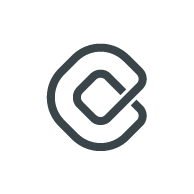Building user-centric products
This project outlines a strategy I developed, in collaboration with colleagues, to recruit, invite and engage HealthEngine’s users and customers for research activities. I also presented a business case to key decision makers within the organisation communicating the importance of structured, sustainable user engagement aiming to get buy-in and resources for rolling out the initiative.
project details
Project: Strategy for sustainable customer research
Client: HealthEngine
Role: Research, strategy, product and visual design
Deliverables: Strategy for implementation of initiative, mobile screens, EDM, advertising content, presentation document

The problem
Existing resources for research were focused on marketing needs, with minimal consideration for design. User engagement was adhoc, inconsistent and time consuming for teams to reliably seek out for ongoing projects. To ensure the business was consistently solving problems for our target market, regular targeted and sustainable engagement was important.
I sought out key members of our product, marketing and growth teams to workshop business requirements and strategise for solving the problem. The in-house copywriter helped with advertising messaging.

Illustrating the importance of ongoing user engagement
There were some key decision-makers who agreed in the importance of research, but were not willing to adjust project timelines or our approach to properly accommodate it. So, it was important to highlighted the key benefits of involving our users.
Regular targeted generative and evaluative research would:
- Ensure we’re solving real problems that exists in peoples lives and that we’re building something useful
- Reveal unidentified needs and opportunities (you don’t know what you don’t know)
- Help build empathy and create a ‘collaboration culture’ within our organisation
- Create shorter product development time upfront, save money on rebuilds (since we’d have a clearer picture in mind of what we were building, and who it’s for)
- Create focus and priorities
The current state of user engagement
I researched and detailed what initiatives and tools the business was currently utilising, gaps in its current approach, and subsequent impact on our outcomes:
- Research was limited, unintegrated and misaligned amongst product teams
- Teams were not always considering customer needs
- Existing research was generative focused, less so evaluative
- User testing was sporadic
- Finding customers for ad hoc projects was time consuming and difficult for busy staff with tight deadlines
- Large impactful change was difficult to achieve for the Growth team, as their improvements were incremental
I mapped out a typical (current) product team workflow and highlighted opportunities for additional research.
Marketing research is not design research
We had an army of staff doing research for their respective teams but, few for design. It was important to highlight key differences between the two necessary approaches to call out gaps in our research activities and attract additional resources for the design team.

Collaborating with users to build better experiences
Benefits of increased user engagement:
-
More effectively and efficiently connect with customers for targeted feedback
-
Better understand customer needs and pain-points
-
Uncover unidentified opportunities
-
Ensure we’re solving the right problems and building experiences customers need and are delighted to use
-
Helps create focus and prioritise features/products
-
Structured and sustainable approach to engaging with customers relevant to particular projects
I created a revised product team workflow (guide) for integrating generative and evaluative research, along with timely user testing.

User engagement process
I created a strategy for sustained user engagement that included four key steps:

I proposed ways in which wecould recruit existing users (new and existing) via a range of channels, such as email, Airtasker, Facebook, Healthmatters and by text message etc. We would ask people to sign up for involvement in future research and testing activities.

Sign up and the capture of basic demographic details would be done from an online portal that would serve several purposes:
- A place for online activities (eg. surveys)
- A way to improve customer participation in the design and delivery of new products
- Promote the design team as an industry leader
- Once we had a list of willing participants we could easily cherry pick the most relevant users to understand and solve their specific problems. Selection criteria would be based on demographic, user journey’s or tasks that needed solving for.
A range of research activities would extract deeper insights that could be shared with the wider business.

Facilitation
Who would need to manage and facilitate research activities?
Who would need to liaise with users and customers?
Would staff members need coaching for running workshops or user testing sessions?
What other logistics would need consideration?
In detail, I broke down mechanisms for recruiting and assets required (such as EDMs, website etc), types of research activities, staff hours and costings for implementation.
Next steps
I outlined what we’d need to consider to get us started – resources, assets, staff rules of engagement with our customers, integration into various teams and possible research activities. We’d need to socialise the initiative with key stakeholders – Customer Success, Design, Product management, Marketing and Growth, then take stock of our current processes and resources required.
Conclusion
By securing a large pool of people representing our target market, it would be much easier to institute regular customer engagement throughout a project lifecycle to build experiences that solve real user problems. We could establish a customer ‘collaboration culture’ to help us build empathy in a growing organisation, and in the end, better products.
As a result of this initiative, regular research and testing activities were included within the Design team’s OKRs to encourage increased research. Using the above strategy, Marketing was tasked with recruiting and inviting users and customers for sustained ongoing engagement.



